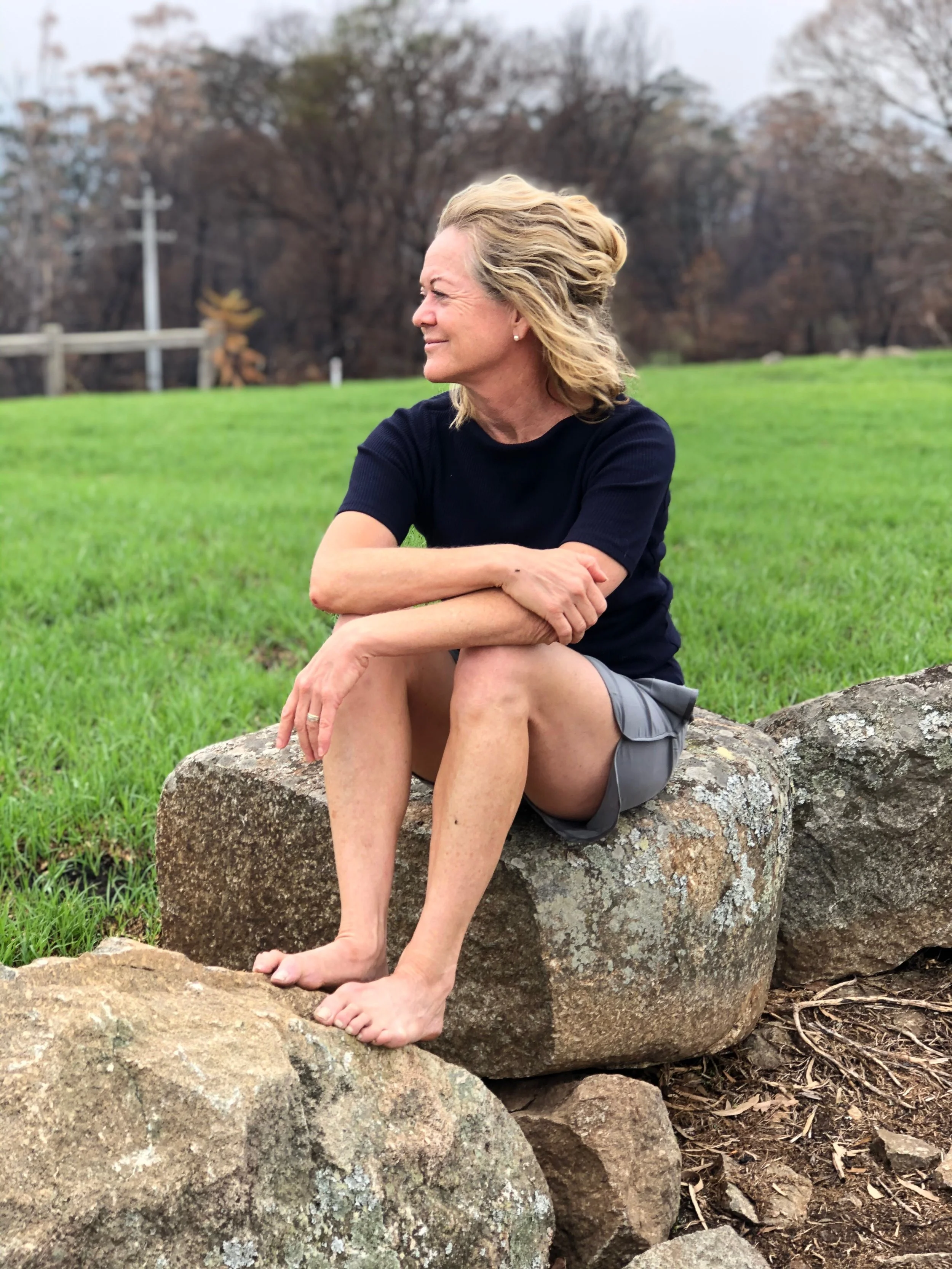Jules Brooker
Originally from Sydney, Jules began her creative journey early, often found making ephemeral patterns – between handstands - at the beach. She now uses traditional basketry techniques and sustainably sourced natural fibres to explore contemporary fibre art.
Jules completed an undergraduate degree at Sydney College of the Arts and worked long hours in the 80s as an Art Director in publishing and advertising. Jules moved to London, where she freelanced for Condé Nast and travelled extensively before returning to Australia to establish a successful design consultancy specialising in visual identity, branding, and strategic marketing.
Alongside her design career, Jules became a certified yoga and mindfulness teacher, fostering her interest in wellbeing. This passion led her back to study, completing a Masters in Wellbeing Science at the University of Melbourne. Today, she integrates this expertise, helping others cultivate creativity and enhance their wellbeing to lead fulfilling lives. Reigniting her own creativity, Jules turned to a hands-on approach through sculptural fibre art, now working from her forever home on Yuin Country on the New South Wales south coast. For Jules, the meditative, repetitive action of weaving offers a playful escape from the constraints of client briefs. Passionate about the environment, Jules completed a Diploma of Sustainable Living at the University of Tasmania, deepening her understanding of sustainable practices and ecological systems. This knowledge informs both her lifestyle and her creative practice, reinforcing her commitment to using locally sourced, natural fibres and reducing her environmental impact.
A member of the Eurobodalla Fibre and Textile Group, Jules has exhibited her works at the annual River of Art festival. Though she rarely creates traditional baskets, she is continually experimenting with new forms, finding flow in the making rather than the completion of each piece. The aftermath of the 2019-2020 bushfires remains a profound inspiration for Jules as she reflects on the slow though reliable regeneration of the Australian landscape. With abundant ideas, she looks ahead to creating large-scale works with finely woven details that, like nature’s





Paper twine, binding wire. Twining
300mm W x 400mm H x 300mm D